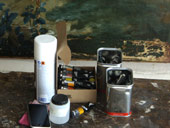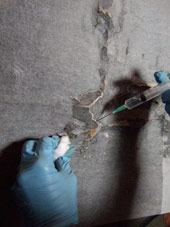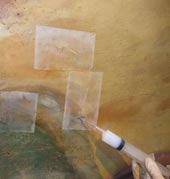



Expertise
in Conservation - Restoration
I. Preliminary studies on restoration
For several years, Cecile Charpentier has conducted studies prior to the restoration of works in the collections of public institutions in order to establish a protocol. For each restoration she explains the necessary technical procedures to be undertaken, including all the materials and products. These studies enable the various institutions to work up a budget and set forth the terms and conditions of restoration for a public tender.
Click on the links below to see examples of studies in Paris:
II. Condition reports
For public institutions, condition reports, analyses and diagnoses are very important to assess the state of conservation of works. giving a precise idea of the degradations and monitoring them over time. When moving or transporting works, a before-and-after report may be expedient.
Click on the links below to see examples of condition Reports:
III. Reports after Restoration
The reports are systematically written up after each restoration to record the work carried out. This document must be precise and provide as much information as possible about the products and materials used during the restoration. This information will allow future restorers to monitor the evolution of painting and decide if new measures are necessary.
Click on the links below to see examples of reports of restoration:
